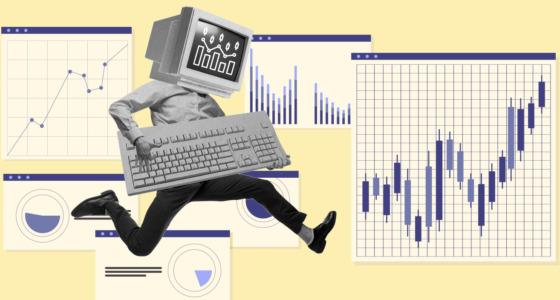

Many business owners believe that making profits is about being in the right place at the right time. But the truth is, if you want to find lasting success in business, you need to be able to anticipate trends. Being able to anticipate trends separates successful companies from those that are always playing catch-up. It’s about being proactive instead of reactive. And it’s not as difficult as it may seem. In this blog post, we’ll explore some ways to start anticipating industry trends so you can find profits before your competition does.
What is Technical Analysis?
Technical analysis is a strategy or approach that uses market data to forecast a security’s likely future price movement, such as a stock or currency pair. The idea that the aggregate purchasing and selling behaviors of all market participants accurately reflect all pertinent information regarding a traded asset and, as a result, continuously assign a fair market value to the security is the basis for the validity of the technical analysis. Technical traders consider the market’s recent or current price activity the most accurate predictor of future price action.
Not just technical traders utilize technical analysis. For example, many fundamental traders employ fundamental analysis to decide whether to enter a market and then use technical analysis to identify attractively low-risk buy entry price levels after making their decision.
Anticipation vs. Prediction
Two key terms are often used interchangeably in business: anticipation and prediction. Though they may seem similar, there is a critical distinction between them that can mean the difference between success and failure.
Anticipation is proactive, while prediction is reactive. To anticipate something is to take action in advance to prevent or prepare for it. Prediction, on the other hand, is simply guessing what will happen in the future based on past data.
The ability to anticipate trends is essential for any business looking to stay ahead of the competition. By definition, trends are future events that can be reasonably expected based on current data. So, if you want to find profits by anticipating trends, you must constantly collect and analyze data to identify potential patterns. It requires a significant investment of time and resources, but it’s the only way to ensure that you’re making decisions based on sound information rather than guesswork.
Once you’ve identified a potential trend, it’s important to act quickly to capitalize on it. But, unfortunately, it is where many businesses fail – they either don’t act at all, or they wait too long and miss their opportunity. The key is to strike while the iron is hot; if you wait too long, someone else will surely beat you to it. Businesses must proactively collect and analyze data to identify potential patterns early.
The Power of Anticipation
As a business owner, staying ahead of the curve and anticipating industry trends to find profits is important. By doing so, you’ll be able to adapt your business model and offerings to meet your customer’s needs and stay ahead of your competition.
There are several ways you can anticipate trends in your industry. One way is to keep up with news and research within your field. It will help you identify new technologies or developments that could impact your business. You can also attend industry events and trade shows to network with other professionals and get a pulse on what’s happening in the market.
Another way to anticipate trends is to track data within your own company. It could include sales data, customer feedback, employee surveys, etc. This information can help you identify any patterns or changes that could indicate a shift in the market. By staying aware of trends, you’ll be able to make strategic decisions for your business that will help you find profits and maintain a competitive edge.

Limited Emotion
When it comes to stock market investing, one of the most important things to remember is that price movement are driven by emotion. Extreme fear or greed can lead to artificially inflated or deflated prices, which presents opportunities for savvy investors to capitalize.
Of course, correctly anticipating these trends is difficult, but if you can do it successfully, you can reap some very healthy profits. There are several different methods, but one of the most effective is tracking changes in social media sentiment. By monitoring what people say about stocks online, you can know when positive or negative emotions are running high and make your trading decisions accordingly.
The Bottom Line
Of course, predicting trends is not always easy, but some specific industries and sectors are more likely to be affected by changes in the economy or consumer behavior. For example, healthcare stocks tend to do well during periods of economic uncertainty because people will always need medical care regardless of the state of the economy. So if you’re looking for stocks that are likely to outperform the market, keep an eye on industries that are expected to grow in the coming years. By investing in these companies early, you’ll be positioned to reap the rewards as they continue to grow.
Note: The information is provided without considering any specific investor’s investing goals, risk tolerance, or financial situation, so it might not be appropriate for all investors. Risks associated with investing include the potential loss of investment.








